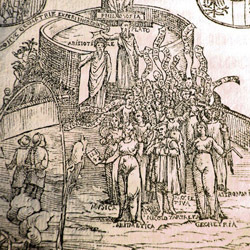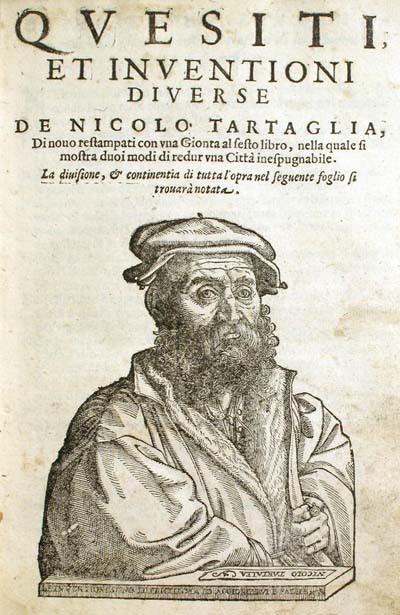

This past Thursday (Mar. 19) at the Math for Everyone lecture series, Arielle Saiber, associate professor of romance languages at Bowdoin College in Brunswick, Maine, gave a presentation titled “Mathy Words in the Italian Renaissance: Niccolò Tartaglia's Poetic Solution to the Cubic Equation.” The presentation looked at the motives behind Tartaglia’s “poetic solution” and what it says about the close relationship between ‘poesis’ and ‘mathesis’ in this period of mathematics’ history.
Niccolò Tartaglia (1449-1557) was a renowned Italian mathematician and engineer who published extensively on mathematics. Although his accomplishments were great, Tartaglia did not have a good education as a child. It is said that he learned only half the alphabet in school before his parents ran out of the funds to keep him enrolled. Tartaglia was essentially self-taught and boasted that he made great strides in learning on his own.
One of Tartaglia’s greatest accomplishments was finding a way to solve cubic equations; a solution which renowned mathematician and physician Girolamo Cardano wanted. Initially, Tartaglia resisted sharing his solution, but eventually agreed to give Cardano the solution if he promised to not publish it. Cardano, however, did publish the solution in his Artis Magnae, an important book on algebra, and gave Tartaglia full credit. He argued that publishing the solution was important for advancing knowledge. Tartaglia was enraged, and one year later he published his own book, detailing the dialogue he previously had with Cardano.
Despite the turmoil behind the publishing Tartaglia’s solution, there was something unique about the solution Tartaglia gave to Cardano: it was in the form of a poem. Tartaglia encoded his solution in a poem for a number of reasons, one of which seems to be as an attempt to make it more difficult for Cardano, and other mathematicians to alter it or steal it. The poem serves as a powerful indicator of how mathematics and poetry can speak across disciplines, and have benefitted one another throughout the centuries.
“This bit of mathematical history, is valuable not only to the history of mathematics but to the history of language and literature,” said Saiber.
Math for Everyone is a series of math-related lectures, especially for undergraduates. The series is complete for the academic year and will resume in the fall semester.